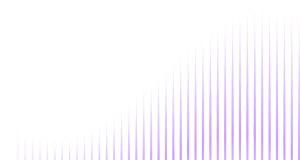In recent years, central banks around the globe have introduced a new wave of currency notes that not only reflect national identity and culture, but also push the boundaries of innovation in security.
From dynamic security threads and multicomponent holographic stripes to micro-optic effects and eco-friendly substrates, modern banknotes are becoming more secure, durable, and visually sophisticated than ever before.
This article explores the cutting-edge security features that define this new generation of currency—and how they’re reshaping the way we perceive and protect physical money.
Get posts like this in your inbox with the bi-weekly Regula Blog Digest!
1. Tongese Pa’anga, 2023 series
In 2023, the National Reserve Bank of Tonga announced a new series of banknotes. The T$5 and T$10 denominations are made with polymer, and the others are made with paper. Each denomination in this series incorporates a variety of security features designed by De La Rue to uphold the highest standards of anti-counterfeiting protection. The prominent banknote of the series is the $100, as it features the micro-optic stripe Nexus™.

The 18mm-wide stripe boasts a large surface area filled with vibrant colors, dynamic imagery, and captivating micro-optic effects.
2. Polish Zloty, 2023 series
The Polish Security Printing Works produced a banknote that commemorates the 550th Anniversary of the birth of Nicolaus Copernicus, a world-famous astronomer and mathematician.

This banknote features two prominent transparent windows.

The left one—the transparent blue window—contains the CCL Cinema™ security feature, representing Copernicus’s proposition that the Earth rotates around the Sun. The Cinema™ feature produces 3D and motion effects when tilted.
The other window contains CLL VIVID™ COLOUR security features. Under white and transmitted white light, it represents the solar system in a realistic but colorless style.
When exposed to ultraviolet light, it becomes a full-color image.

3. East Caribbean Dollar, 2023 series
Designed by De La Rue, it is a commemorative banknote which is a part of the polymer series first introduced by the Eastern Caribbean Central Bank in 2019.

One of the prominent features of the banknote is SAFEGUARD® ARGENTUM reflective ink. It is a specialized silver ink that produces a mirror-like effect.
4. Swazi Lilangeni, 2023 series
The 200-lilangeni note was introduced in 2023. The banknote is made by the manufacturer Giesecke+Devrient, and the design is similar to the previous series from 2017. The rare security feature that is used in this banknote is a latent image with multi-colour PEAK-pixel.

This PEAK-pixel image is created using blind embossing on a substrate printed with raster dots. When viewed under oblique light at a sharp angle, the embossed hemispherical elements reveal their effect. These elements are designed so that each one has different-colored pixels on the opposite side surfaces. Depending on the direction of the light source, one of these colors appears more vivid and intense.
This dominant color defines the overall hue of the image. Consequently, the interaction between the raster-printed substrate and the embossed structure generates the PEAK-pixel with a noticeable color shift
5. Surinamese Dollar, 2024 series
The 200 and 500 Surinamese Dollar banknotes received the Best New Banknote award at the High Security Printing 2024 event held in Santiago de Chile. The latest high-denomination notes stood out due to their innovative security features and the use of environmentally friendly substrate technologies.
One of the most outstanding security features is the varifeye® ColourChange Patch produced by Giesecke+Devrient. The front side is enhanced with foil incorporating micromirror technology, featuring vibrant colors and dynamic movement effects, while the reverse includes an additional motif revealed through precisely laser-cut windows.

Despite its gold appearance under incident white light, in transmitted light, the varifeye® ColourChange Patch appears in blue from both front and reverse sides.

6. Mozambique Metical, 2024 series
The new series of Mozambique metical, issued in 2024 by the Banco de Moçambique, contains banknotes printed on polymer and paper, just like in the previous 2006 series. The lower denominations—20, 50 and 100 meticals—are made with polymer, while the 200, 500 and 1000 notes are printed on paper.

One of the prominent features of the new 2024 series is the eye-catching RAPID® HD security thread developed by Crane.
RAPID® HD security threads display high-contrast movement effects which are clear and easily verifiable. Plus, the thread contains nano-printed inscriptions of the banknote denomination.
7. Yuan Renminbi, 2025 series
Continuing with the topic of nano-printing, it is impossible not to mention the recently issued yuan banknote. This distinctive banknote is dedicated to the commemoration of the year of the Snake in the Chinese Zodiac cycle.

The dynamic holographic stripe with a transparent window features not only microprinting but also nano printing.
8. Philippine Peso, 2024 series
After the 1000-piso polymer banknote, which was introduced in 2022, the Bangko Sentral ng Pilipinas continued to present other polymer denominations. In 2024, the series was complemented with 500-, 100-, and 50-piso notes.

This banknote is equipped with CCL Secure’s IRISWITCH™ feature, which appears transparent when viewed at right angles, but becomes iridescent and pearlescent when the banknote is tilted. The dominant color for this banknote is shimmering gold.

Conclusion
In today’s fast-paced world, staying up to date with the latest banknote security features is more challenging than ever. Yet, the need to verify physical currency remains as important as always.
That’s why we recommend using the Information Reference System Currency—a reliable, regularly updated resource that offers weekly insights. It provides detailed views of banknotes under various lighting conditions, along with close-up images that highlight security features and printing techniques, making verification easier and more accurate.
P.S. The samples featured in this article were obtained using the Information Reference System. All images shown are sourced directly from that system.





